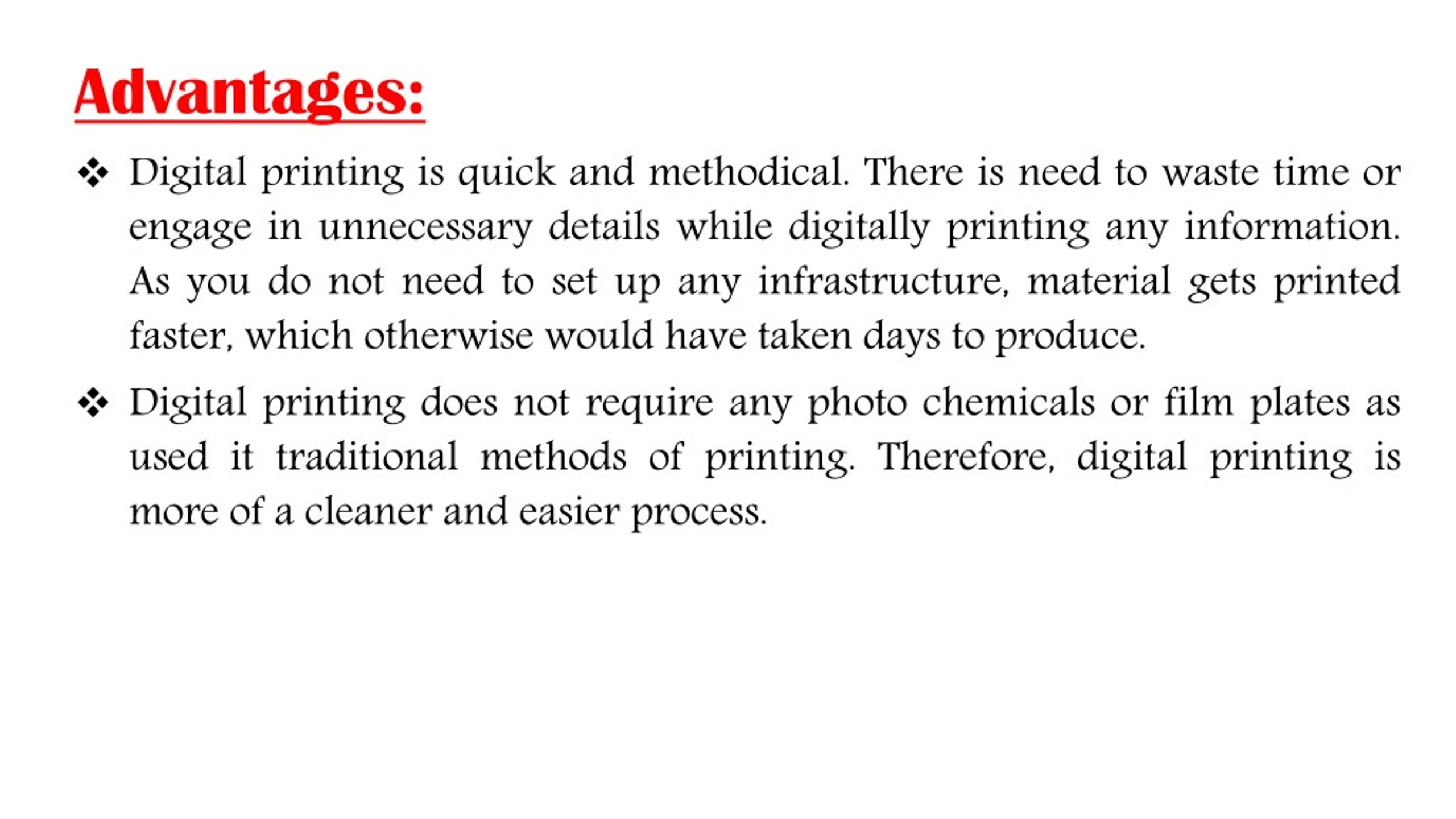See This Report about Digital Printing
See This Report about Digital Printing
Blog Article
What Does Digital Printing Do?
Table of ContentsSome Known Details About Digital Printing Digital Printing Fundamentals ExplainedThe 2-Minute Rule for Digital PrintingExcitement About Digital PrintingSome Known Incorrect Statements About Digital Printing
Unlike standard countered printing, which relies on mechanical processes, electronic printing makes use of advanced technology to generate high-grade prints. One of the essential benefits of electronic printing is its.The fluid ink or toner adheres evenly to the paper surface, resulting in vibrant and true-to-life shades. Uniformity is one more substantial benefit used by digital printing. Unlike offset printing, where variants can take place as a result of aspects like plate wear and ink density changes, digital printers regularly supply top quality prints from the initial page to the last.
Digital printing allows for greater flexibility in terms of modification and customization. With variable information printing capabilities, each printed piece can be tailored independently with unique text, images, or designs without sacrificing quality. Digital Printing. This degree of customization opens up new opportunities for targeted advertising campaigns and personalized communication with customers

About Digital Printing
With digital printing, each print is created independently based on demand. Standard offset printing calls for comprehensive arrangement time before production can begin.
These processes take in both time and power sources. On the other hand, digital printing has minimal setup requirements. The process includes moving electronic documents straight to the printer without the requirement for plate prep work or shade adjustments. As a result, much less power is consumed during setup, reducing environmental effect. Moreover, since digital printers do not need extensive warm-up times like their countered counterparts do, they consume less electrical power overall.
Digital printers utilize eco-friendly inks and printer toners that have lower degrees of volatile natural compounds (VOCs) compared to conventional offset inks. VOCs are chemicals that add to air pollution when released into the environment. Along with having reduced VOC material, many digital printers also make use of water-based inks as opposed to oil-based ones found in balanced out printers.
The smart Trick of Digital Printing That Nobody is Discussing
Using environmentally friendly inks and printer toners in digital printing ensures that the printing process has actually a reduced effect on air quality and advertises a healthier working environment for printers and printing shop employees. To conclude, electronic printing supplies countless advantages over typical balanced out printing (Digital Printing). It is a cost-efficient remedy that allows businesses to save money on printing expenditures
The faster turn-around times given by electronic printing give businesses the opportunity to meet tight due dates and react swiftly to market needs. Among the vital benefits of electronic printing is its improved adaptability and personalization options. This allows companies to customize their printed products according to their one-of-a-kind needs and preferences.
A: Digital printing supplies faster turnaround times because it needs very little setup and preparation contrasted to offset printers. A: Yes, digital printing is much more environment-friendly than offset printing as it decreases waste and gets rid of the requirement for chemicals generally made use of in typical methods.
Accept the advantages of electronic printing today and unlock its possible to boost your advertising and marketing initiatives. Keep in mind: The over final thought area has been composed adhering to the given guidelines for a specialist conclusion on digital printing machine. However, please note that check here some requested writing styles, such as jargon, expressions, or colloquial language, might not be check here ideal in this context.
See This Report on Digital Printing
Offset and digital printing are both most prominent printing approaches for style projects. The distinctions in between them are extensive, from versatility and waste to the cost proportion of longer or shorter production runs. Though typical countered printing and digital printing are advantageous techniques, each has advantages and downsides. Choosing the far better printing process will inevitably depend on your job's specific demands.

Although the tools's set up expenses are high originally, extra units come to be fairly more economical as the quantity rises. Offset printing allows for a wide range of print materials to be utilized during manufacturing. It permits the printer to make use of different paper types, custom-made coatings, and various inks. The high-grade photos generated via offset printing make it the preferred method, particularly amongst visuals designers, when looking for the best color reproduction, information, and professional-looking prints.
The Ultimate Guide To Digital Printing
For digital inkjet printing, ink is transferred directly onto the surface. Rather than relying on aluminum plates and rubber blankets to transfer a picture, digital printing makes use of fluid ink throughout manufacturing.

Report this page